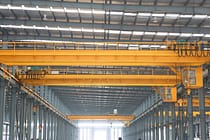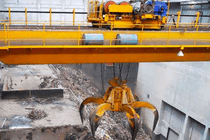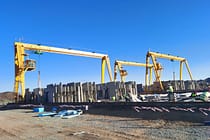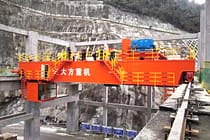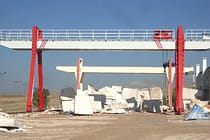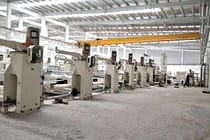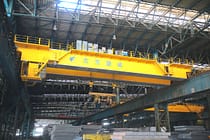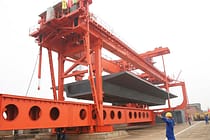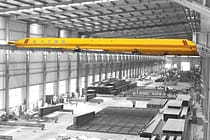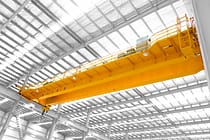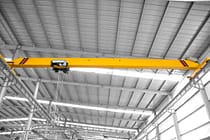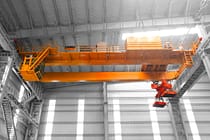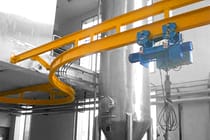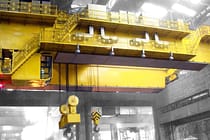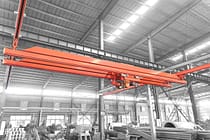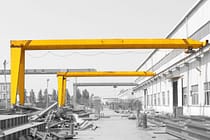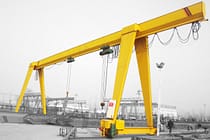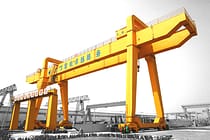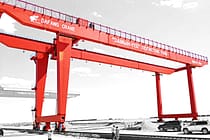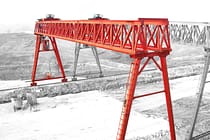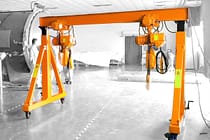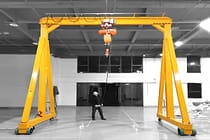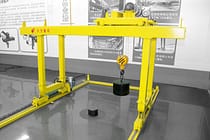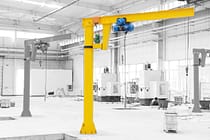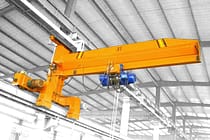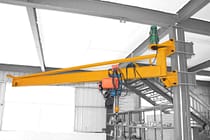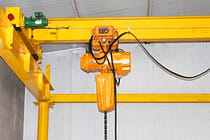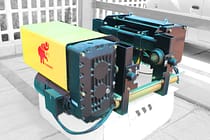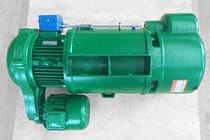What Is A Magnetic Overhead Crane And What Applications Is It Suitable For?
If you work in an industrial setting, you might have encountered the need for heavy lifting or moving of metallic objects. This is where magnetic overhead cranes come into play. These cranes are capable of lifting and moving loads that are too heavy to be handled by humans or other types of cranes. In this article, we will explore what magnetic overhead cranes are and what applications they are suitable for.
What Is A Magnetic Overhead Crane?
A magnetic crane is a crane system that uses magnets to lift and move loads. The magnet is mounted on the crane hoist and can be opened and closed to extract or release the load as required. These cranes typically operate on an overhead track system and can move loads horizontally and vertically.
The strength of the magnets used in these cranes can vary depending on the weight of the load being lifted. Some cranes use permanent magnets and others use electromagnets which require a source of electricity. Magnetic cranes can also be customised to meet specific industry requirements.
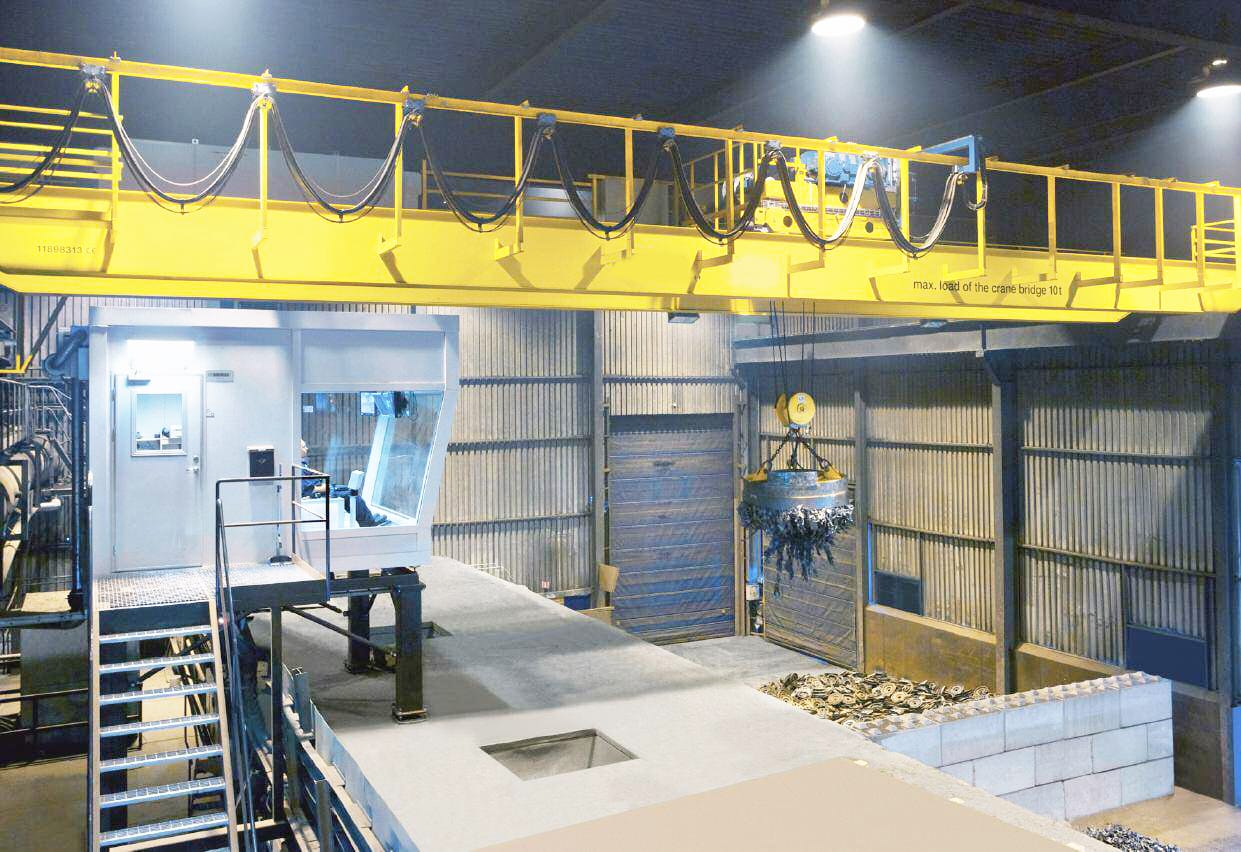
How Does A Magnetic Overhead Crane Work?
Magnetic overhead cranes use either permanent or electromagnets to lift and move loads. A permanent magnet is made of ferromagnetic material that retains its magnetic properties over time. An electromagnet, on the other hand, is made of coiled wire that produces a magnetic field when an electric current flows through it.
When the magnet is attached to the load, an electric current is passed through the magnet’s wire coils (in the case of an electromagnet), or the magnet is activated (in the case of a permanent magnet). The magnetic field generated by the magnet attracts the ferrous metal in the load, allowing it to be lifted and moved.
Types Of Magnetic Overhead Cranes
1. Electromagnetic Overhead Crane
This is the most common type of magnetic overhead crane. It uses an electromagnet attached to the end of the crane’s hoist, which creates a strong magnetic field when turned on. The magnetic field is strong enough to lift and move heavy loads. The magnetism can be turned on and off using a simple switch, allowing the crane operator to easily control the lifting and releasing of the load.
2. Circular Overhead Crane
A circular overhead travelling crane is a crane that travels in a circular path around a central axis. A circular overhead travelling crane is mounted on a circular track system and consists of a trolley that moves along the track, supporting a hoist that can lift and move heavy loads. The trolley is driven by an operator-controlled motor. Circular overhead travelling cranes offer a complete 360-degree range of motion, allowing the operator to easily place heavy loads anywhere in the working area. This is why this type of crane is often used in manufacturing and construction industries where heavy loads need to be moved over a wide area.
3. Rectangular Overhead Crane
A rectangular overhead crane is a type of industrial crane that is designed to move heavy loads vertically and horizontally within a rectangular area. It consists of two horizontal girders or beams that are mounted on top of vertical pillars or columns, forming a rectangular frame.
Rectangular overhead cranes are particularly useful for moving heavy loads over a specific area or along a production line. The rectangular shape of the crane allows it to cover a larger working area compared to other types of cranes.
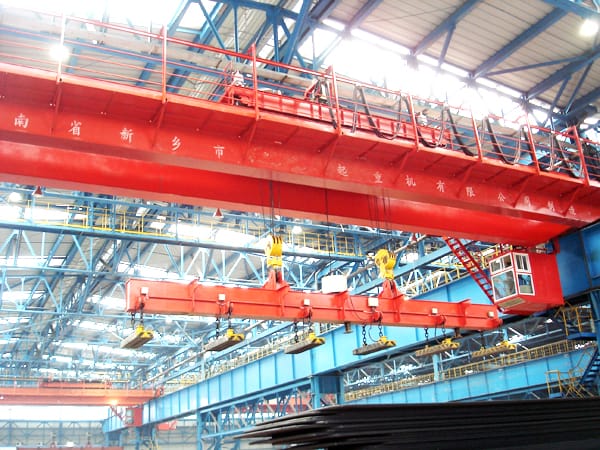
4. Electro-Permanent Overhead Crane
This type of crane uses a combination of electromagnetic and permanent magnet technology. When the electromagnets are turned on, they create a strong magnetic field that attracts ferrous materials. Once the materials are lifted, the permanent magnets take over and hold the load in place. This type of crane is often used in hazardous environments where power failures could be dangerous.
5. Battery-Powered Overhead Crane
Battery powered crane is a lifting device operated by rechargeable batteries. It aims to provide a safe and efficient solution for moving materials in areas where electricity is not always available.
One of the main advantages of battery-powered cranes is their flexibility. Since it does not rely on an external power source, it can be used in almost any environment. In addition, they are much quieter than traditional cranes, making them ideal for use in noise-sensitive areas. In terms of maintenance, battery-powered cranes require less maintenance than their electric-powered counterparts. This is because they have fewer moving parts and do not require regular lubrication. They also tend to have a longer useful life and lower total cost of ownership.
Advantages Of Magnetic Overhead Cranes
One of the main advantages of magnetic cranes is their ability to lift and move heavy and irregularly shaped objects easily. This is particularly useful in industries such as steel and shipbuilding, where large pieces of metal need to be transported quickly and efficiently. Magnetic cranes can lift these objects without having to sort them, reducing the time and effort required for manual sorting.
They can lift heavier loads than conventional cranes, move materials faster and more efficiently, reduce downtime and increase productivity. This is particularly important in facilities where time is critical and delays can result in lost revenue.
They do not require direct contact with the object being lifted and can be used to move materials that may be hot, sharp or dangerous. This reduces the risk of accidents and injuries in the workplace and makes magnetic cranes a valuable addition to any industrial facility.
They can be customised to meet the specific needs of different industries and applications, including hazardous environments such as oil and gas installations. This makes them ideal for companies looking to improve their operations and bottom line.
Applications Of Magnetic Overhead Cranes
Magnetic overhead cranes have a wide range of applications in various industries, including:
1. Steel Industry
Steel mills use magnetic overhead cranes to easily and efficiently transport large, heavy steel plates or coils from one place to another. In addition to this, the magnetic force enables the crane to lift and move steel safely without damaging it, which is an important reason why magnetic overhead cranes are suitable for the steel industry. Circular EOT cranes are often used in steel mills
2. Recycling Industry
In these locations, cranes can be used to pick up and transport scrap metal, such as old cars, appliances and machinery. The magnets on the crane make it easy to collect and transport large quantities of metal at once, saving time and increasing efficiency. Rectangular bridge cranes are often used in scrapyards and recycling facilities.
3. Port Terminals
Magnetic bridge cranes can be used in port terminals for loading and unloading cargo from ships. The crane’s magnetic system provides a powerful lifting force that can easily lift and transport containers, bulk cargo, and other heavy objects. In port terminals, magnetic bridge cranes are usually installed on rails, the crane to moves along the length of the dock and reaches different areas of the ship. The crane operator can control the movement of the crane using a remote control or a cabin located on the crane itself.
Factors To Consider When Selecting A Magnetic Overhead Crane
Weight capacity: The first factor to consider is the weight capacity of the crane. You’ll want to make sure that the crane you choose can handle the maximum weight of the materials or products that need to be lifted.
Type of load: Consider the type of load that will be lifted, as this will influence the type of magnet needed. For example, if you’re lifting sheet metal, you may need an electro-permanent magnet, while if you’re handling scrap metal, a circular electromagnet may be more appropriate.
Span and lift height: The span and lift height of the crane should also be taken into account. The span is the distance between the runway beams, and the lift height is how high the crane can lift the load. Make sure the crane you select can reach the required height and span for your application.
Power source: Determine whether the crane will be powered by electricity or compressed air. Electric cranes are typically more common and easier to maintain, while air-powered cranes are better suited for hazardous environments.
Maintenance requirements: Consider the ease of maintenance and any ongoing costs associated with maintaining the crane, such as inspections and repairs.
Safety features: Ensure that the crane has appropriate safety features, such as emergency stop buttons, overload protection, and warning systems.
FAQs
- Can magnetic overhead cranes be used to lift non-ferrous materials?
No, magnetic overhead cranes are designed specifically for lifting ferrous materials. - Are magnetic overhead cranes more expensive than other types of cranes?
Yes, magnetic overhead cranes tend to be more expensive due to the specialized equipment required to operate them. - Can magnetic overhead cranes be customized to meet specific needs?
Yes, magnetic overhead cranes can be customized to meet the specific needs of a business or industry. - Are there any safety concerns associated with using magnetic overhead cranes?
Yes, it is important to follow proper safety protocols when using magnetic overhead cranes, as they can be dangerous if not used correctly. - How do you maintain a magnetic overhead crane?
Regular maintenance and inspections are necessary to ensure that a magnetic overhead crane is functioning properly and safely. It is recommended to have a trained professional perform these tasks.
Send Your Inquiry
- Email: sales@hndfcrane.com
- WhatsApp: +86-191 3738 6654
- Tel: +86-373-581 8299
- Fax: +86-373-215 7000
- Add: Changnao Industrial District, Xinxiang City, Henan Province, China
